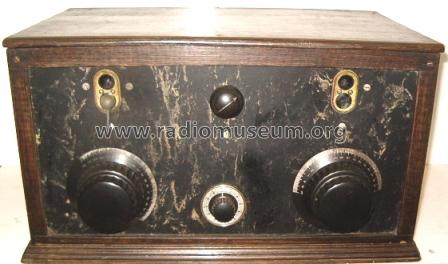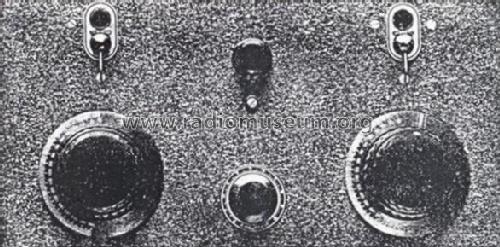Récepteur Télégraphie Amateur RTA4
SBR Société Belge Radio-Electrique, Bruxelles
- Pays
- Belgique
- Fabricant / Marque
- SBR Société Belge Radio-Electrique, Bruxelles
- Année
- 1928/1929

- Catégorie
- Radio - ou tuner d'après la guerre 1939-45
- Radiomuseum.org ID
- 228456
Cliquez sur la vignette du schéma pour le demander en tant que document gratuit.
- No. de tubes
- 4
- Principe général
- Récepteur TRF en général (avec ou sans réaction inconnu); Neutrodyne
- Gammes d'ondes
- PO et GO
- Tension / type courant
- Piles (rechargeables ou/et sèches) / 4 & 80 & 120 & -15 Volt
- Haut-parleur
- - Ce modèle nécessite des HP externes
- Matière
- Matériaux divers
- De Radiomuseum.org
- Modèle: Récepteur Télégraphie Amateur RTA4 - SBR Société Belge Radio-
- Forme
- Chassis (pour intégration dans meuble)
- Remarques
- In spite of its name, these receivers can be used to listen to regular radio broadcasts.
- The "Récepteur Télégraphie Amateur" models RTA3 and RTA4 were on sale as kit or fully factory assembled.
- The "Récepteur Télégraphie Amateur" model RTA5 was on sale as partially assembled kit or fully factory assembled.
- There are no type plates on the radios. The name we use here is found on the manuals and on contemporary commercial flyers.
- RTA3 was powered from (storage) batteries. A separate internal negative grid voltage battery ("C" battery) is present. There is an alternative tubeset: R81 , R76 , R79.
- RTA4 was powered from (storage) batteries. It was also possible to use it with an external M35 power supply. In that case, following tubes had to be used: E424 , E424 , E424 , B403. A separate internal negative grid voltage battery is present, even when powered by M35.
- RTA5 was powered by the AC mains with an internal power supply. It has also a pick-up connection.
- Auteur
- Modèle crée par Dirk Bladt. Voir les propositions de modification pour les contributeurs supplémentaires.
- D'autres Modèles
-
Vous pourrez trouver sous ce lien 718 modèles d'appareils, 666 avec des images et 391 avec des schémas.
Tous les appareils de SBR Société Belge Radio-Electrique, Bruxelles


